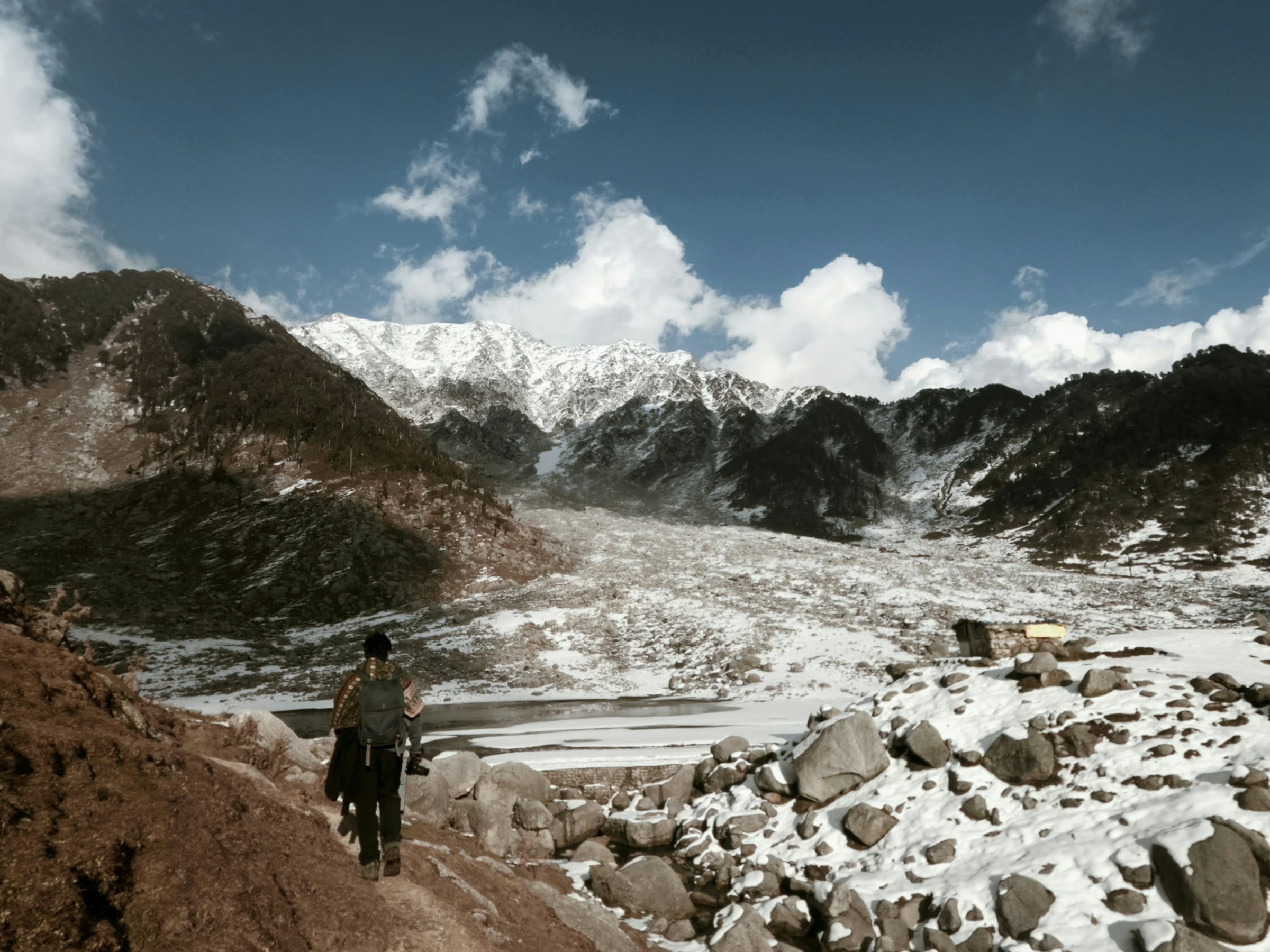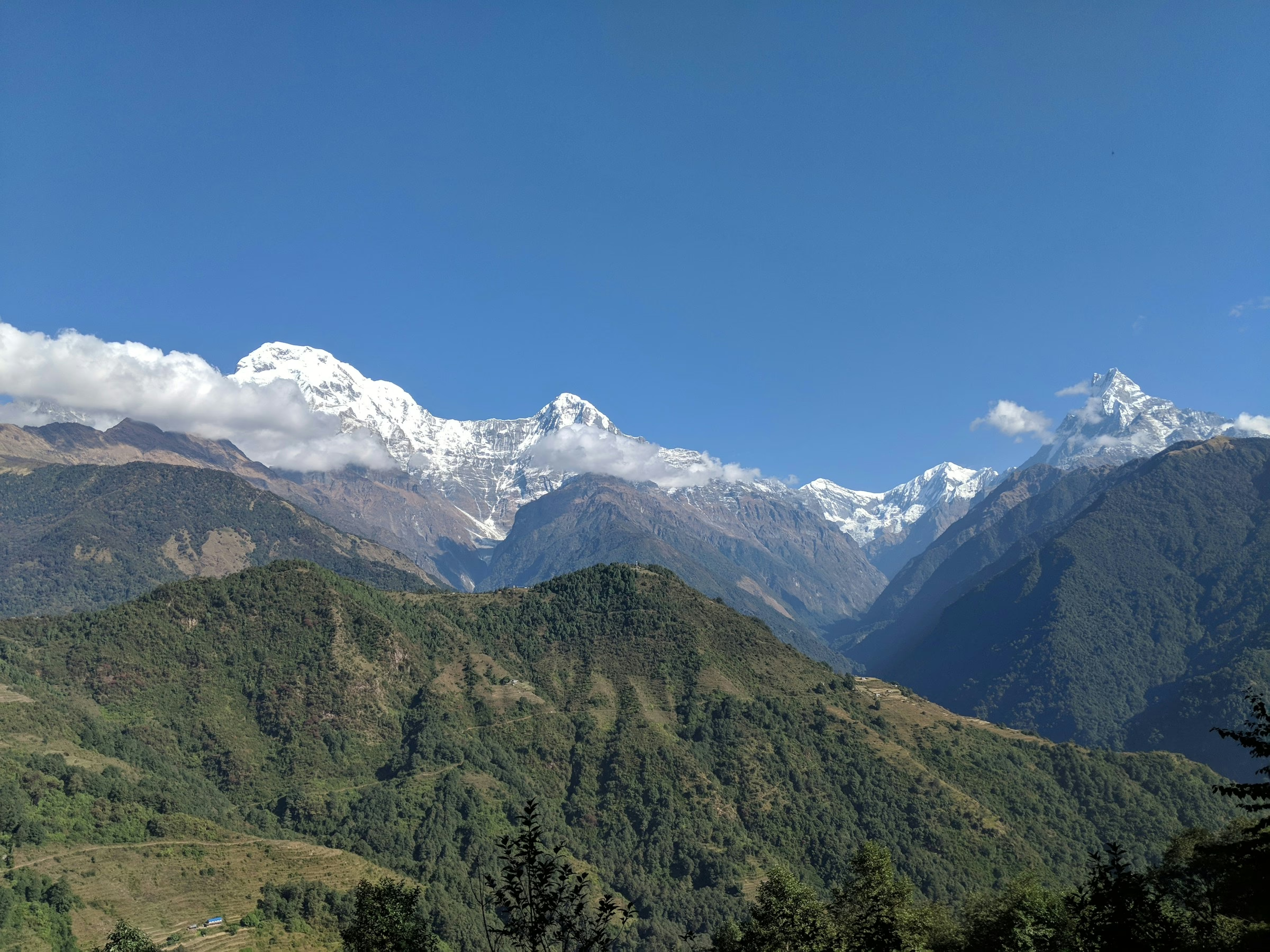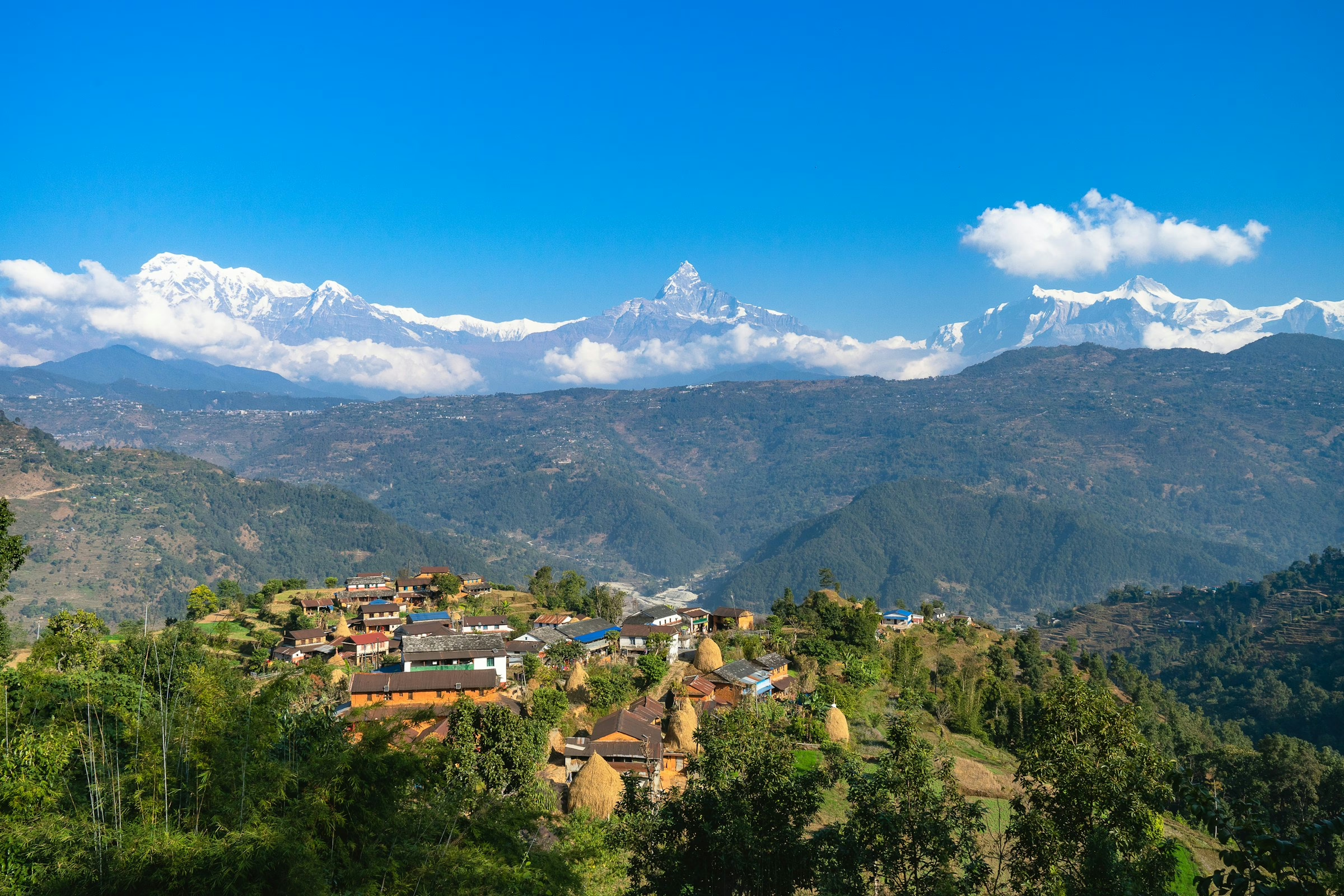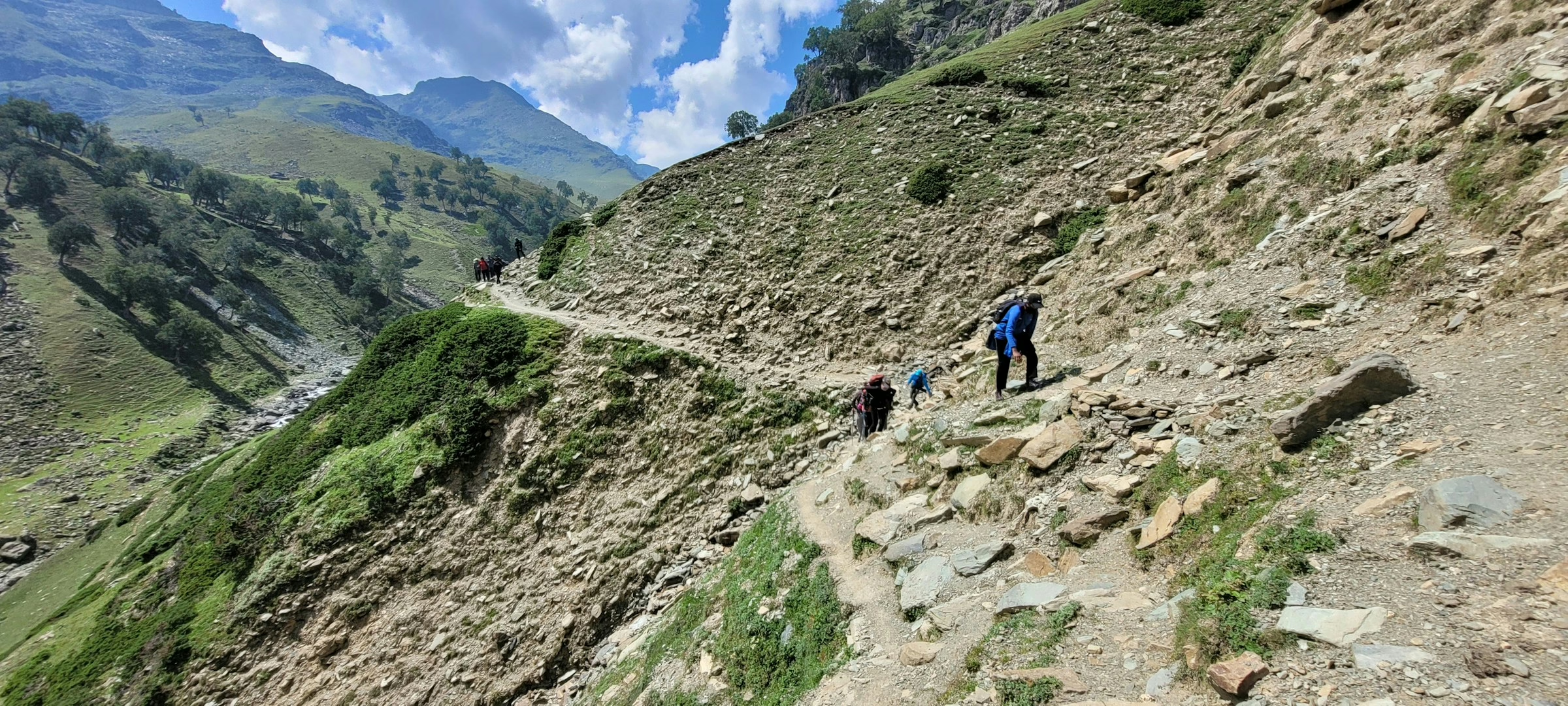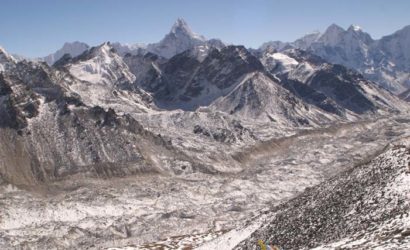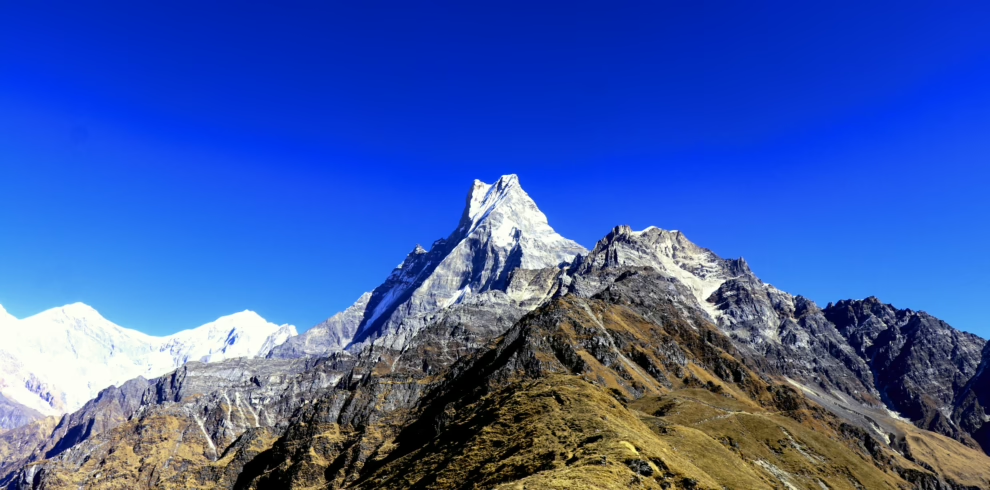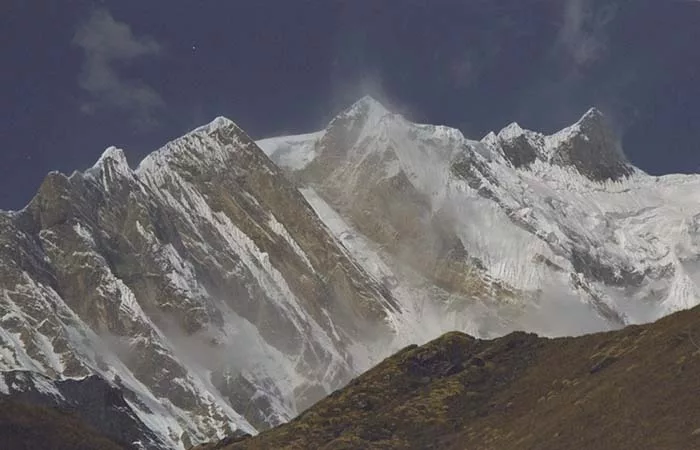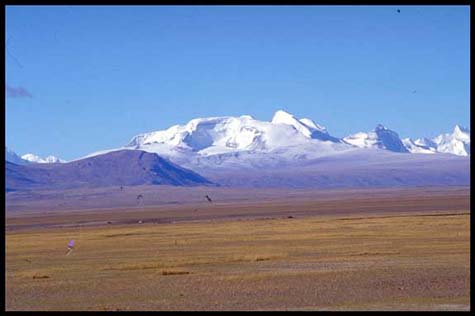Tucked away in one of Nepal’s restricted regions, the Nar Phu Valley & Kang La Pass Trek offers a rare blend of raw Himalayan beauty and untouched Tibetan culture. Opened to foreign visitors only in 2003, this remote valley remains one of the most pristine trekking destinations in Nepal. To preserve its authenticity and protect the local communities, special permits are required — and they must be arranged through a registered trekking company with a licensed guide.
That’s where Green Lotus Trekking comes in. As a trusted, government-authorized operator, we’ll handle all your Nar Phu Valley trekking permits and pair you with experienced, certified guides who know the region inside out.
The Nar Phu Valley is home to Tibetan descendants living in timeless villages that feel worlds away from modern civilization. As you trek through this secluded paradise, you’ll witness ancient monasteries, traditional stone houses, and high-altitude landscapes that few ever get to see. Beyond its deep cultural heritage, the route also rewards you with jaw-dropping views of some of Nepal’s most iconic peaks — including Annapurna, Dhaulagiri, Manaslu, Tilicho Peak, and Lamjung Himal.
If you’re craving a truly immersive and off-the-grid Himalayan adventure, the Nar Phu Valley Trek is calling.
Overview
Nar Phu Valley is one of Nepal’s most remote and unspoiled regions, offering a rare glimpse into raw Himalayan landscapes and authentic Tibetan culture. Open to trekkers since 2003, this secluded valley is home to Tibetan descendants, where travelers can experience traditional lifestyles in timeless mountain villages. In addition to its cultural richness, Nar Phu Valley offers stunning views of iconic peaks such as Annapurna, Dhaulagiri, Manaslu, Tilicho Peak, and Lamjung Himal.
The trek begins with a drive from Kathmandu to Dharapani, from where we follow the Annapurna Circuit route to Koto. From there, we leave the main trail and enter the Nar Phu region, crossing high passes, narrow gorges, ancient monasteries, and picturesque villages to reach the remote settlements of Nar and Phu, near the Tibetan border. After exploring the valley, we reconnect with the Annapurna Circuit at Manang and continue toward Thorong La Pass (5,416m), passing Yak Kharka and Thorong Phedi.
After crossing the high pass, we descend to Muktinath — a sacred pilgrimage site for both Hindus and Buddhists. From Muktinath, we take a shared Jeep to Jomsom and fly to Pokhara, where the trek concludes. Most trekkers opt to relax in Pokhara afterward, but we can also arrange a return trip to Kathmandu on request.
The trek’s highest points are Kang La Pass (5,200m) and Thorong La Pass (5,416m). Green Lotus Trekking organizes this adventure as a teahouse trek, offering local homestays, simple Nepali meals, and experienced guides.
For details about the Nar Phu Valley Kang La Pass Trek cost and itinerary, feel free to contact us via WhatsApp or email.
Benefits of Booking the Nar Phu Valley with Kang La Pass Trek with Us
- Complimentary international airport pickup and drop-off
- Free Green Lotus Trekking T-shirt and duffle bag
- Detailed trekking map of Nar Phu Valley including Kang La and Thorong La Passes
- Access to basic medical kits when needed
- Free storage for excess luggage at our Green Lotus Trekking office during the trek
Preparing for the Nar Phu Valley with Kang La Pass Trek
Physical and mental readiness is essential for trekking. If you’re new to hiking, we recommend preparing with regular morning walks, cardio exercises, or cycling several weeks in advance. Prior trekking or climbing experience is beneficial, especially for this trek.
The journey reaches its highest point at Thorong La Pass (5,416 meters), and includes frequent ascents and descents through farmlands, terraces, and riverside villages. Expect to hike 4–6 hours daily, so a good level of stamina is necessary. Mental preparedness is equally important, as confidence and a positive mindset can help you manage physical challenges.
If you have any respiratory conditions, we strongly advise consulting your doctor before booking. Please share your medical report with us for your safety.
Nar Phu Valley Trek: Essential Information Guide
Trekking Permits for Nar Phu Valley (2025–2026)
Trekking in Nepal requires official permits issued by the government in partnership with registered trekking agencies. For the Nar Phu Valley Trek, three permits are needed:
1. TIMS (Trekker’s Information Management System)
Records your travel details to ensure safety.
SAARC Countries: NPR 600 (individual), NPR 300 (group) per person
Other Foreigners: NPR 2000 (individual), NPR 1000 (group) per person
2. ACAP (Annapurna Conservation Area Permit)
Supports conservation efforts in the Annapurna region.
Nepali Citizens: NPR 100
SAARC Citizens: NPR 1500
Other Foreigners: NPR 3000
3. Nar Phu Valley Special Permit
Must be obtained before departure, in Kathmandu or Pokhara.
Sep–Nov: USD 100/week per person, USD 15/day after first week
Dec–Aug: USD 75/week per person, USD 15/day after first week
Note: Buying permits at checkpoints costs double.
Best Seasons for Nar Phu Valley Trekking
When planning a trek to Nar Phu Valley and Kang La Pass, weather is the most important factor. The best times to trek are during spring and autumn, when Green Valley Nepal Treks operates most of its trips.
Spring (March to May)
Spring is a popular trekking season in Nar Phu Valley. The weather is warm, skies are clear, and rainfall is minimal—making it ideal for hiking. Lower elevations are comfortably warm, and by April, trails above 3,000 meters are lined with blooming rhododendrons in shades of red, pink, and white. Temperatures begin rising from mid-March through mid-May, creating excellent trekking conditions.
Autumn (September to November)
Autumn is another prime trekking season due to mild temperatures, light winds, and dry weather. Clear skies offer stunning views of the mountains during the day and starry skies at night. By early September, the monsoon ends, leaving behind fresh greenery and warm days. The landscape is especially scenic, with golden fields, lush lowlands, and clean, crisp air.
Meals on the Nar Phu Valley Kang La Pass Trek
Proper nutrition is essential for high-altitude trekking, and we ensure a variety of wholesome meals throughout the journey. However, food choices become more limited at higher elevations.
Breakfast typically includes Tsampa porridge (a local specialty), pancakes, Tibetan bread or chapati, eggs, butter, cheese, honey, muesli, fruits, vegetables, and hot drinks.
Lunch options include dal bhat tarkari (rice, lentils, and vegetables), various soups, vegetable curries, Thukpa (noodle soup), Sherpa stew, noodles, pasta, potatoes, momos (dumplings), Tibetan bread, salads, sandwiches, pizza, macaroni, snacks, and desserts.
Dinner features a similar range of dishes: dal bhat, vegetable curry, soups, momos, Sherpa stew, spaghetti, Korean ramen, potatoes, papad, prawns, Tibetan bread, and a variety of snacks and desserts.
Accommodation During the Nar Phu Valley Trek
In Kathmandu and Pokhara, you’ll stay in quality hotels. If you’re part of a group, you’ll share a room with a trekker of the same gender. Single rooms are available for an additional fee.
During the trek, accommodation is provided in tea houses—simple lodges that serve as a restaurant, hotel, and social space. Rooms typically have twin beds with minimal furnishings like small tables or chairs. While blankets are usually available, bringing your own sleeping bag is recommended.
Toilet facilities vary, with both squat and Western-style options. Most lodges offer hot showers, but an extra charge may apply.
Nar Phu Valley Trek Difficulty
The Nar Phu Valley Trek via Kang La Pass is considered highly challenging due to its high altitude and rugged terrain. The route reaches up to 5,416 meters at Thorung La Pass, which remains closed for much of the year due to extreme cold and heavy snowfall. Throughout the trek, you’ll remain above 3,000 meters, traversing steep, rocky, and demanding trails.
Unlike many other treks, the difficulty of this journey cannot be easily adjusted. Skipping sections may reduce the challenge, but it also means missing key highlights. To fully enjoy and complete the trek, both physical and mental preparation are essential.
Travel Insurance for Nar Phu Valley Trek
The Nar Phu Valley Trek involves high-altitude travel through Thorung La Pass (5,416m) and Kang La Pass (5,320m), posing risks such as altitude sickness and landslides. Therefore, comprehensive travel insurance is mandatory.
Before the trek, trekkers must provide Green Valley Nepal Treks with proof of insurance covering medical treatment, emergency evacuation, and helicopter rescue—up to an altitude of 6,000 meters. After booking, please submit your insurance details, including the certificate and policy information. In case of an emergency, we will coordinate rescue operations based on the documents you provide.
Altitude Sickness and Remedies During the Nar Phu Valley Trek via Kang La Pass
Altitude sickness occurs when the body struggles to adapt to reduced oxygen and lower air pressure at high elevations. Symptoms typically appear above 3,000 meters and may include headaches, fatigue, nausea, dizziness, shortness of breath, insomnia, and loss of appetite.
To minimize the risk of altitude sickness during your Nar Phu Valley trek, follow these guidelines:
- Stay well-hydrated and avoid alcohol, which causes dehydration.
- Eat a balanced, nutritious diet throughout the trek.
- Carry and use Diamox (acetazolamide), a common preventive medication.
- Ascend gradually and avoid rushing—walk at a steady, slow pace.
- Take time to acclimatize before trekking above 3,000 meters.
- If symptoms appear, stop ascending immediately or descend to a lower altitude.
- Maintain good personal hygiene to support overall health at altitude.
Nar Phu Valley Trek with Kang La Pass – Packing List
Below is a general packing list for the Nar Phu Valley and Kang La Pass trek. Adjust it according to your specific needs and expected weather conditions:
- Warm, waterproof clothing: jacket, pants, gloves, hat
- Durable, comfortable hiking boots
- Sunscreen and UV-protection sunglasses
- Water bottles and purification tablets or a water filter
- High-energy snacks (e.g., energy bars, nuts)
- First aid kit with blister care and personal medications
- Sleeping bag with liner
- Headlamp or flashlight with spare batteries
- Map and compass
- Emergency whistle
- Cash and a credit card
- Passport, permits, and necessary visas
- Camera (optional)
Nar Phu Valley Trekking Guide and Safety
At Green Lotus Trekking, your safety is our top priority. We take the following measures to ensure a secure and enjoyable trekking experience:
- Our experienced trek leaders and guides are well-trained to prioritize your comfort, safety, and well-being.
- All guides receive wilderness first aid training.
- Trek leaders provide continuous motivation and support throughout the journey.
- We carefully assess the hygiene standards of meals and accommodations along the route.
- Our team carries essential gear, equipment, and a fully stocked first aid kit.
- Trek leaders have the authority to pause or end the trek if a participant experiences altitude sickness or other health concerns.
Nar Phu Valley Kang La Pass Trek Booking Procedure
Green Lotus Trekking is a government-registered and bonded trekking company with over 10 years of experience. We are proud members of the Nepal Mountaineering Association (NMA) and the Trekking Agencies’ Association of Nepal (TAAN), making your booking with us safe and reliable.
To confirm your Nar Phu Valley Trek, a 10% advance payment is required. Within one week of booking, please email us the following documents:
- A copy of your passport
- Two passport-sized photos
- Travel insurance details
- Flight information
We accept payments via Western Union, bank transfer, and secure online payment through our website. The remaining balance can be paid in Kathmandu using cash, bank transfer, or credit card. We will provide all necessary payment details upon booking.
Highlights
- Explore one of the most remote and untouched regions of the Annapurna Himalayas.
- Immerse yourself in the rich cultures of Tibetan, Buddhist, and Mongolian communities.
- Cross both Thorong La and Kang La passes, offering stunning panoramic views of the Annapurna range.
- Encounter timeless traditions, diverse wildlife, and rare bird species.
- Witness majestic mountain giants such as Manaslu, Dhaulagiri, and Annapurna.
- Trek along the edge of the Tibetan plateau within Nepal's borders.
- Traverse hidden valleys filled with alpine forests, rugged terrain, deep river gorges, and diverse flora and fauna.
- Visit sacred sites like Muktinath Temple and Tashi Lhakhang Gompa.
- Relax in the natural hot springs at Tatopani.
- Discover the world’s deepest gorge—Kali Gandaki Gorge.

